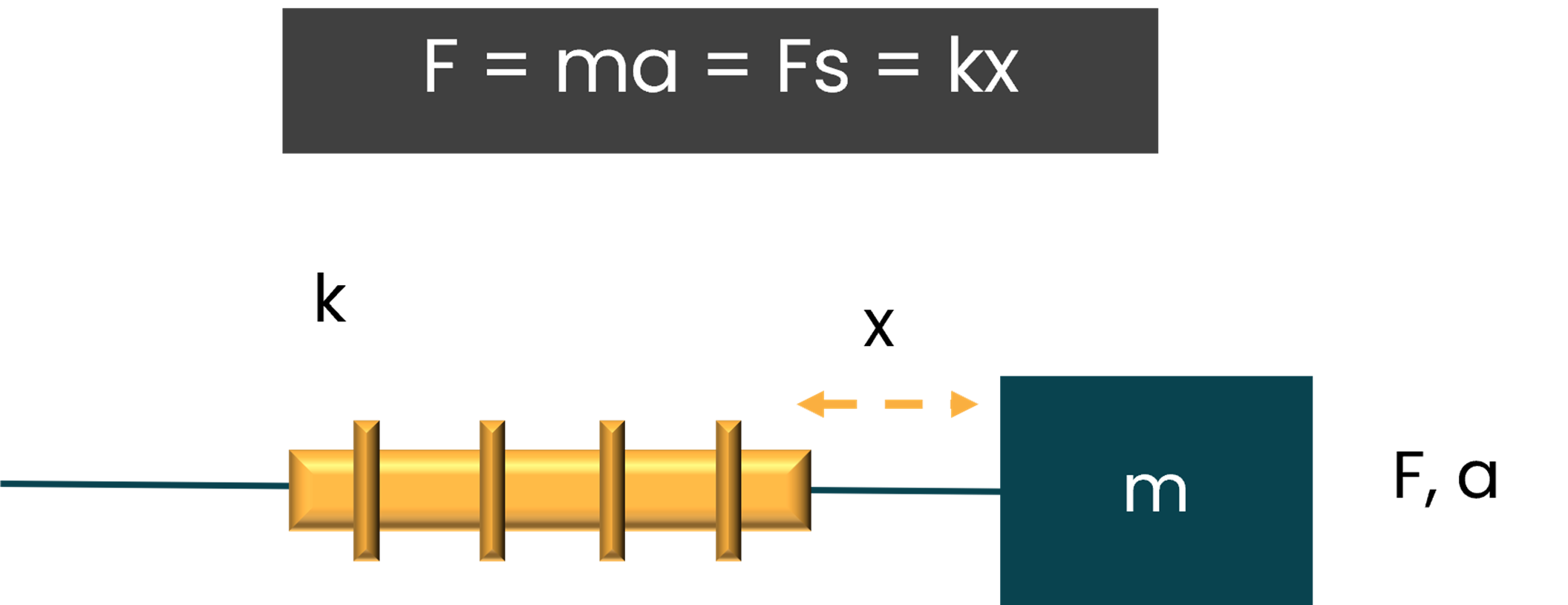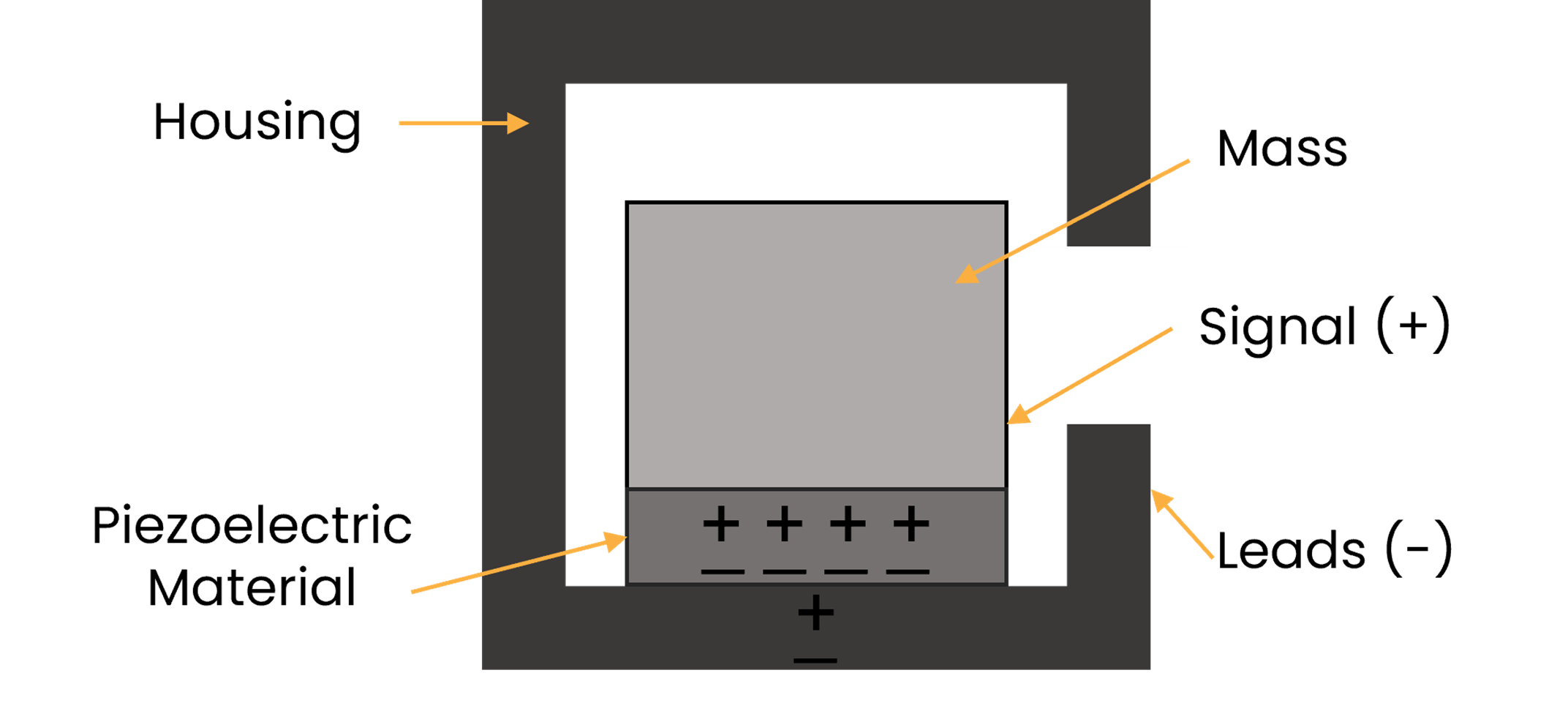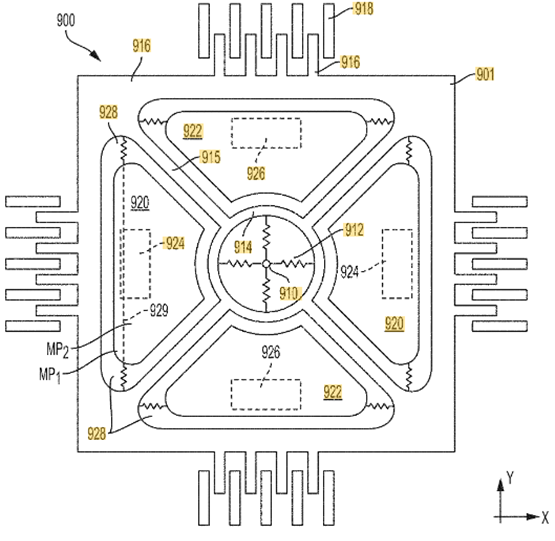Accelerometers – A Type of Micro-Electro-Mechanical System (MEMS)
Introduction
It seems we have entered a world where moving components in the latest technology are gone. Moving components are large and take up space, while people prefer smaller things. Our smartphones rely heavily on mechanical components like accelerometers to perform daily tasks such as mapping directions, camera stabilization, car crash detection, etc. There are miniature components in your smartphone that move around all the time. Here, we will focus on accelerometers.
What are MEMS and Accelerometers?
Accelerometers are a type of Micro-Electro-Mechanical System or MEMS. MEMS is a technology consisting of miniaturized mechanical and electro-mechanical elements which measure a certain physical quantity. This can include the acceleration or orientation of an object, like a smartphone. An accelerometer is a device that can measure and analyze linear and angular acceleration.
For example, when a user picks up a phone to check their notifications, the screen will turn on without the user touching it. How is that done? The smartphone uses data collected from an accelerometer and gyroscope to measure the smartphone's acceleration and orientation. If the phone has accelerated past a point indicating it is being picked up and is oriented upward, it can assume the user has picked it up to check the notifications.
How do MEMS- Accelerometers Work?
The calculations and processing needed to convert a raw signal from an accelerometer to a physical quantity like acceleration can be explained with rudimentary physics.
An accelerometer consists of a mass, a spring, and capacitor plates. The mass experiences a force, which causes a displacement. This displacement affects the capacitance, as seen by “C1” and C2”. To understand this, we need to break it down further.
The components of an accelerometer (mass, spring, and capacitor) can be simplified to a mass and spring system.
As seen above, a mass m is attached to a spring with a spring coefficient k. When mass m experiences a force F, it will displace x amount. You experience this phenomenon when you suddenly hit the car brakes and jolt forward temporarily. The small movement you experience is the displacement x. We care about this value x because it can be used to calculate acceleration, as proved below.
Let’s start with one of the most fundamental equations in physics:
F = ma (This force “F” is the force of the spring and is equal to the spring coefficient times the displacement.)
F = ma = kx (From this, we can conclude acceleration “a” is proportional to displacement “x”. This is important because by measuring “x”, an acceleration quantity can be calculated. One way to measure “x” is by using capacitance. The capacitance equation (shown below) shows that capacitance C is inversely proportional to displacement “x”.)
C = ε(A/x)
Understanding this, we can modify the figure for easier visualization.
In summary, a force “F” displaces the mass “m” and “x” amount. This change in displacement causes a change in capacitance, which can be measured. Working backwards and with the equations discussed, acceleration can be calculated.
How Can a Complex Mass-capacitor System Fit in Our Smartphones?
Now that we understand the concept, the next logical question is how this large system can fit in a small smartphone. This is where MEMS comes in. Small accelerometer systems can be made using capacitors, masses, and springs manufactured at a micrometer scale. A small movable mass is embedded between multiple plates and the capacitance is measured (C1 and C2).
History of Accelerometers Technology
Resistance-bridge-type
One of the earliest developments of the accelerometer was of the resistance-bridge-type, commercialized in the 1920s. It weighed about a pound and was primarily used in bridges, planes, and dynamometers.
Strain Gauge Accelerometers
Strain Gauge Accelerometers
Accelerometers did not become more commercialized until the invention of the Strain Gauge Accelerometers in 1938.
As seen in the image above, the displacement of the “Mass” causes a strain on the “Bonded Strain Gauges.” Similar to the capacitance concept explained above, this strain is proportional to the vibration displacement of the mass, which is proportional to the vibration/acceleration. The key issue with strain gauge accelerometers was the signal-to-noise ratio. This is because they had to use low-stiffness flexures, which resulted in low resonant frequencies and mechanically fragile accelerometers. A low resonant frequency meant a lower frequency response, which meant the measuring range of the device was limited. These constraints led to the invention of Piezoelectric Sensors.
Piezoelectric Accelerometers
Piezoelectric Accelerometers are the type that can produce electric energy when there is mechanical stress. This is possible because the material’s electrons experience displacement when under stress, resulting in a measurable electrical charge. This property made them perfect for the accelerometer application. Additionally, this material had a high resonant frequency allowing for a large signal range and were significantly smaller than their strain-gauge counterparts.
Recent IP Activities related to Accelerometers
There are many patents related to accelerometer technology. It is a device that is constantly improving and getting innovated. For example, in the section below, we have described a recent patent (US10732198B2) related to accelerometers.
The main idea for this invention is introducing compactness in accelerometers. As discussed above, the accelerometers described only measure one direction. To measure X, Y, and Z axis as well as the rotational acceleration, the system would need multiple accelerometer systems to measure each one. This invention can detect linear and angular acceleration using a single system. This is done by utilizing capacitive sensors along all 6 axes: X, Y, and Z, and their respective rotational axis.
This figure is a top-down view of the invention. The capacitors indicated by 918 are seen on all 4 sides and are used to measure linear accelerations across the X, Y, and Z axis. The mass 901 accelerates as a singular piece and will affect the capacitance on all 3 axes.
The capacitors indicated by 952, 950, 954, and 956 can measure the angular acceleration amongst the X and Y axis. If the singular mass 901 experiences a rotational acceleration.
It shows a zoomed-in portion of 920. The rotation of this pass in the XY plane or about the Z-axis will alter the capacitance measured by 960 and 962. In turn, the angular acceleration of the Z-axis can be calculated
IP Moat related to Accelerometers
Top Patent Assignees
Based on this analysis, Analog Devices appears to be the top patent assignee followed by Honeywell and Invensense as seen from the INPADOC (International Patent Documentation) family count. Other major players such as ST Microelectronics, General Electric, Apple, etc. are also showing up in our analysis. It is also interesting to note that several academic research institutions such as Southeast University, Northwestern Polytechnical University, etc. are also aggressively filing patents related to this technology.
As shown in our analysis, the United States is leading the other countries in terms of patent activities related to accelerometers. This can be attributed to the huge demand for smart products and gadgets that make use of accelerometers. China and Republic of Korea are taking the second and third spots followed by Japan and Canada.
Top Accelerometers patents by Application Year
From the diagram, it can be inferred that most of the accelerometer-related innovations have happened in the last 5 years. From our analysis, it appears that the years between 2014 and 2019 saw the highest patent filing activity in the last decade. This could be attributed to the sudden increase in consumer needs for smart products and gadgets that relied on advanced versions of accelerometers for providing precise input about the product and the user’s activities.
*Disclaimer: This report is based on information that is publicly available and is considered to be reliable. However, Lumenci cannot be held responsible for the accuracy or reliability of this data.
*Disclaimer: This report is based on information that is publicly available and is considered to be reliable. However, Lumenci cannot be held responsible for the accuracy or reliability of this data.
Author
Editorial Team at Lumenci
Through Lumenci blogs and reports, we share important highlights from the latest technological advancements and provide an in-depth understanding of their Intellectual Property (IP). Our goal is to showcase the significance of IP in the ever-evolving world of technology.














